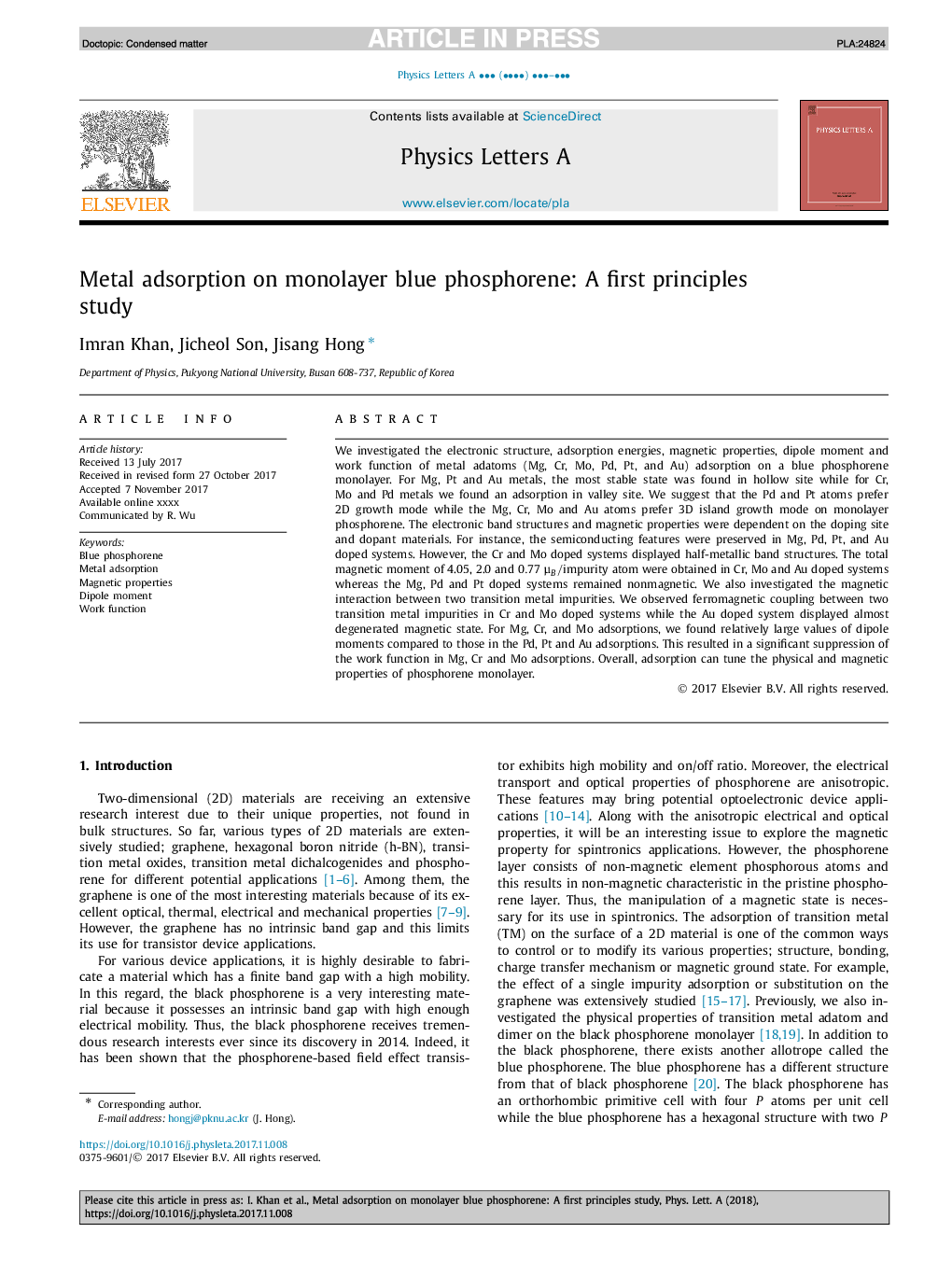| Article ID | Journal | Published Year | Pages | File Type |
|---|---|---|---|---|
| 8204225 | Physics Letters A | 2018 | 5 Pages |
Abstract
We investigated the electronic structure, adsorption energies, magnetic properties, dipole moment and work function of metal adatoms (Mg, Cr, Mo, Pd, Pt, and Au) adsorption on a blue phosphorene monolayer. For Mg, Pt and Au metals, the most stable state was found in hollow site while for Cr, Mo and Pd metals we found an adsorption in valley site. We suggest that the Pd and Pt atoms prefer 2D growth mode while the Mg, Cr, Mo and Au atoms prefer 3D island growth mode on monolayer phosphorene. The electronic band structures and magnetic properties were dependent on the doping site and dopant materials. For instance, the semiconducting features were preserved in Mg, Pd, Pt, and Au doped systems. However, the Cr and Mo doped systems displayed half-metallic band structures. The total magnetic moment of 4.05, 2.0 and 0.77μB/impurity atom were obtained in Cr, Mo and Au doped systems whereas the Mg, Pd and Pt doped systems remained nonmagnetic. We also investigated the magnetic interaction between two transition metal impurities. We observed ferromagnetic coupling between two transition metal impurities in Cr and Mo doped systems while the Au doped system displayed almost degenerated magnetic state. For Mg, Cr, and Mo adsorptions, we found relatively large values of dipole moments compared to those in the Pd, Pt and Au adsorptions. This resulted in a significant suppression of the work function in Mg, Cr and Mo adsorptions. Overall, adsorption can tune the physical and magnetic properties of phosphorene monolayer.
Related Topics
Physical Sciences and Engineering
Physics and Astronomy
Physics and Astronomy (General)
Authors
Imran Khan, Jicheol Son, Jisang Hong,
